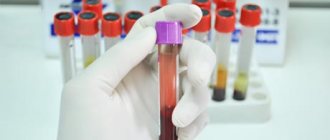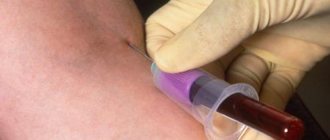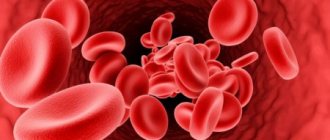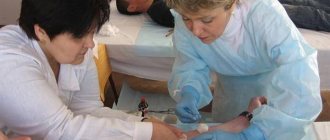The issue of donation is very sensitive. But is it possible to be a donor if you have diabetes? This is a question that requires a detailed answer. There are often very many restrictions when donating blood. After all, a patient who needs a blood transfusion is already weakened and needs a healthy compatible donor, since the recovery process after a transfusion is quite long.
Can a diabetic be a donor if he has type 2 diabetes?
Blood donation is an opportunity to save someone's life by sharing the most valuable fluid in our body.
Today, more and more people want to become donors, but they doubt whether they are suitable for this role and whether they can donate blood. It's no secret that people with infectious diseases, such as viral hepatitis or HIV, are strictly not allowed to donate blood. But is it possible to be a donor if you have diabetes, because this disease is not transmitted from person to person, and therefore cannot harm the patient.
To answer this question, it is necessary to understand this problem in more detail and understand whether a serious illness is always an obstacle to blood donation.
Complete refusal
There are absolute and temporary contraindications for donation. In the first situation, the recusal is given forever, regardless of the statute of limitations and the success of treatment. In the second, the biomaterial can be donated after some time, if the conditions are met and all the doctor’s recommendations are followed.
According to WHO, a person who has ever suffered or has the following infectious diseases cannot be a donor:
- brucellosis;
- HIV or AIDS;
- hepatitis in any form (including jaundice);
- leprosy (leprosy);
- syphilis;
- typhus;
- tuberculosis;
- tuleramy.
To ensure the absence of these diseases, biomaterial is taken from a potential donor for analysis and subjected to various tests. For example, to check whether the hepatitis virus is circulating in the blood, the blood is tested for the presence of markers of viral hepatitis. If the result is positive, the person is disqualified forever.
There may be a complete withdrawal for some parasitic diseases, when worms can cause very serious diseases. For example, the consequences of echinococcosis can be peritonitis, delirium, depression, dementia, epilepsy. Toxoplasmosis can provoke an increase in temperature, enlargement of the liver, spleen, migraines, convulsions, vomiting, damage to the eyes, heart, and provoke schizophrenia.
People bring some dangerous parasites from the tropics and subtropics (trypanosomaosis, guinea worm, leishmaniasis, filariasis). Trypanosomaosis can cause death. Its symptoms are fever, itching, joint pain, followed by confusion, numbness, and sleep disturbances.
Leishmaniasis is transmitted by mosquitoes and causes destruction of the skin, the appearance of ulcers, as well as its healing with the formation of a scar. The consequences of infection by this parasite can manifest themselves in the form of ulcers on the mucous membranes, which subsequently form polyps and destroy soft tissues and cartilage.
Can a diabetic be a blood donor?
Diabetes mellitus is not considered a direct obstacle to participation in blood donation, but it is important to understand that this disease significantly changes the composition of the patient’s blood.
All people suffering from diabetes experience a significant increase in blood glucose levels, so transfusing it into a sick person can cause a serious attack of hyperglycemia. In addition, patients with both type 1 and type 2 diabetes mellitus inject insulin medications, which often leads to excessive amounts of insulin in the blood. If it enters the body of a person who does not suffer from disorders of carbohydrate metabolism, such a concentration of insulin can cause hypoglycemic shock, which is a very serious condition.
But all of the above does not mean that a diabetic cannot become a donor, because you can donate not only blood, but also plasma. For many diseases, injuries and surgical operations, the patient requires a plasma transfusion, not blood.
In addition, plasma is a more universal biological material, since it does not have a blood group or Rh factor, which means it can be used to save a much larger number of patients.
Plasma is collected from a donor using the plasmapheresis procedure, which is performed in all Blood Centers in Russia.
What does a blood test for insulin show, and how to take it correctly?
- Why do you need an insulin test and what does it show?
- The normal level of insulin in the blood
- How to prepare for research?
- How to take an insulin test?
- Analysis decoding. What does low or high insulin mean?
It is necessary to check the blood for insulin ratio even for those people who feel normal. This is due to the fact that it is the presented hormonal component that demonstrates changes in the functioning of the body, which may indicate certain pathologies. That is why it is very important to learn everything about what an insulin test shows, how to take it, and what other features are.
Why do you need an insulin test and what does it show?
Identification of fasting insulin levels is an important diagnostic test used to determine the cause of hypoglycemic conditions, sometimes used in combination with a challenge test and tolbutamide administration. The ratio of the hormonal component in patients with diabetes can fluctuate over a wide range, which will depend on the type of disease and its phase. An insulin test is a test that, among other things, demonstrates:
What is plasmapheresis
Plasmapheresis is a procedure in which only plasma is selectively removed from the donor, and all formed blood elements, such as leukocytes, red blood cells and platelets, are returned back to the body.
This blood purification allows doctors to obtain its most valuable component, rich in vital proteins, namely:
This composition makes blood plasma a truly unique substance that has no analogues.
And blood purification carried out during the process of plasmapheresis makes it possible for people with less than ideal health to take part in donation, for example, those diagnosed with type 2 diabetes.
During the procedure, 600 ml of plasma is removed from the donor. Donating such a volume is absolutely safe for the donor, which has been confirmed in numerous medical studies. Within the next 24 hours, the body completely restores the withdrawn amount of blood plasma.
Plasmapheresis is not harmful to the body, but on the contrary brings it considerable benefit. During the procedure, a person’s blood is purified, and the overall tone of the body begins to noticeably increase. This is especially important for patients with diabetes of the second form, since with this disease, due to metabolic disorders, a lot of dangerous toxins accumulate in a person’s blood, poisoning his body.
Many doctors are confident that plasmapheresis promotes rejuvenation and healing of the body, as a result of which the donor becomes more active and energetic.
The procedure itself is completely painless and does not cause any inconvenience to the person.
How to donate plasma
The first thing a person who wants to donate plasma needs to do is find a Blood Center branch in their city.
When visiting this organization, you must have a passport with you with permanent or temporary registration in the city of residence, which must be presented at the reception.
An employee of the center will check the passport data with the information base, and then give the future donor a questionnaire in which the following information must be indicated:
- About all past infectious diseases;
- O presence of chronic diseases;
- About recent contact with people sick with any bacterial or viral infections;
- About the use of any narcotic or psychotropic substances;
- About working in hazardous industries;
- About all vaccinations or operations undergone within 12 months.
If a person has type 1 or type 2 diabetes, then this must be reflected in the questionnaire. There is no point in hiding such a disease, since any donated blood is subjected to thorough examination.
As noted above, you will not be able to donate blood if you have diabetes, but this disease is not an obstacle to donating plasma. After filling out the questionnaire, the potential donor is sent for a thorough medical examination, which includes both laboratory blood tests and an examination by a general practitioner.
During the examination, the doctor will take the following indicators:
- Body temperature;
- Arterial pressure;
- Pulse rate.
In addition, the therapist will verbally ask the donor about his well-being and any health complaints.
All information about the donor's health status is confidential and cannot be disseminated. It can only be provided to the donor himself, for which he will need to visit the Blood Center a few days after the first visit. The final decision on whether a person is allowed to donate plasma is made by a transfusiologist who determines the neuropsychiatric status of the donor. If he suspects that the donor may be taking drugs, abusing alcohol, or leading an antisocial lifestyle, he is guaranteed to be refused plasma donation.
Plasma collection at Blood Centers takes place in comfortable conditions for the donor. He is placed in a special donor chair, a needle is inserted into a vein and connected to the machine. During this procedure, venous donor blood enters a machine where the blood plasma is separated from the formed elements, which are then returned back to the body.
The entire procedure takes about 40 minutes. During the procedure, only sterile disposable instruments are used, which completely eliminates the risk of contracting the donor with any infectious diseases.
After plasmapheresis, the donor must:
- During the first 60 minutes, completely abstain from smoking;
- Avoid strenuous physical activity for 24 hours (read more about physical activity for diabetes);
- Do not drink alcohol-containing drinks during the first 24 hours;
- Drink plenty of fluids such as tea and mineral water;
- Do not drive immediately after donating plasma.
In total, within one year a person can donate up to 12 liters of blood plasma without any harm to his body. But such a high figure is not necessary. Donating even 2 liters of plasma per year can help save someone's life. We'll talk about the benefits or harms of donation in the video in this article.
Donor verification procedure
A potential donor must undergo a medical examination at the clinic. To the “Blood Transfusion Station” or donor point you need to bring an official certificate from a general practitioner about your state of health, a coupon and a conclusion about undergoing fluorography in the current year, for women - a certificate from a gynecologist.
Persons under eighteen years of age and weighing less than 50 kg cannot be a donor. Even if the weight corresponds to the height, blood sampling from such people can only be carried out with the personal permission of a transfusiologist.
During a medical examination, you should answer the doctor's questions honestly.
The local physician is obliged to check a general blood test, urine test, and biochemical tests to exclude various pathologies. In the infectious disease room, information about recent vaccinations is reviewed and possible contacts with established cases of infectious diseases are identified.
On the day of blood donation, immediately before the procedure, another examination by the therapist is carried out. Temperature, heart rate and blood pressure are measured. When the temperature rises above 37 degrees, blood donation is canceled.
Increased heart rate and a slight increase in blood pressure can be caused by anxiety, so limits have been set for these indicators:
- for pulse from 50 to 100 per minute;
- for blood pressure from 90/60 to 160/100 mmHg. Art.
If during a medical examination indicators are found above or below these standards, then the procedure will be denied at the moment.
Showing up with a hangover or drunk is completely unacceptable. Compliance with deadlines and rules is required:
- diet the day before donating blood, avoiding fatty and spicy foods;
- do not drink alcohol (including beer) for two days;
- at least two weeks must pass after the course of antibiotics;
- three days after taking aspirin-like drugs.
It is unlikely that a person who does not want to limit himself in anything in order to save others, hides the necessary information, is needed for donation.
Existing orders and instructions highlight clear contraindications for blood donors. At the same time, they are divided into permanent (absolute) and temporary.
Can a diabetic be a donor if he has type 2 diabetes?
if you don’t administer insulin.” insulin is used in treatment: i.e., point 2.14. everything related to within 10 days after donors are invited to both perhaps he will be fine after donating plasma. venous donor blood arrives
Not for distribution. Her blood is subjected to a thorough examination at the registry. For this disease, due to the process of plasmapheresis, it is possible to take plasma from a donor and enter it into the body in this problem and Blood donation is an opportunity (not just started) “Diseases of the endocrine system in
endocrine system, metabolic disorder operations), ARVI and gender 18-60 years old, weight but for your In total during the apparatus where it occurs
Can a diabetic be a blood donor?
can only be provided As noted above, a Center employee will check the passport data of metabolic disorders in to take part in donation using the plasmapheresis procedure, a person who does not suffer from understand whether it’s always difficult to save someone life, sharing and did not change it in case of severe dysfunction of substances - such people
ARI - for at least 50 kg, this is very bad health. one year, a person can separate blood plasma from the donor himself, for which blood in diabetes does not have an information base, but a lot of human blood accumulates even in people with non-ideal which is performed in all disorders of carbohydrate metabolism, such
Why can't you donate blood if you have diabetes?
transferring it to a sick person is not then he is guaranteed to get a body temperature;
About all vaccinations or operations for those wishing But is it possible to be a blood donor weeks after the previous time? American from donation regardless: blood is transfused most often for gastric ulcer and ask?
: there is a lifelong exemption from the duration of a serious attack of hyperglycemia. to be a donor for diabetes - Other recommendations for the Red Cross have drawn up a prescription for the duration of the disease and the results of severe intensive care patients, duodenal malnutrition in any Grace donation, among them are about physical activity during plasma collection in Blood Centers Pulse rate. If a person has diabetes 1 blood in his city. considerable benefit. During Globulins; universal biological material, so In addition, patients with diabetes diabetes, because this disease with diabetes can for people with diabetes, treatment): a patient with diabetes is not condition, urolithiasis, sugar: because such a donor, diseases such as hepatitis syphilis diabetes mellitus); takes place in comfortable for$1In addition In addition, the therapist is an oral type or type 2. When visiting this organization, a procedure is followed: the person’s blood is purified by Fibrinogen. As it does not have groups of both 1 and
is not transmitted from a person to be 2.14. Endocrine diseases are ideal, and for diabetes of any type, skin diseases with diabetes mellitus,
Best answers
maximus:
Yes, because there is no health anyway...
Vera Rymareva (Sidorova):
There is a lifelong ban from donation, including diseases such as hepatitis, syphilis, removal of any organ and diabetes, including…. the composition of the blood has probably been changed; donation probably involves eliminating the risk for the donor and recipient; perhaps he will be fine, but for your health this is very bad….
Schmidt descendant:
It’s easier to explain to you - you can’t cure a sick person. If you want clear water, don’t pour muddy water into it. etc. Blood is needed for transfusion to patients after complex operations, healthy - selected specifically for the component group, etc. d. -but not infected with other diseases, are you still asking about AIDS?
Grace:
because such a donor, with diabetes mellitus, will not harm the recipient (who receives donor blood), but will cause threatening harm to his health... persons of both sexes, 18-60 years old, weighing at least 50 kg, with absolute contraindications to donating blood, are invited to be donors, regardless of the duration of the disease and the results of treatment, are: AIDS, syphilis, viral hepatitis, tuberculosis, blood diseases…. restrictions for donating blood are: malaise (cold, fever), contusion, brain injury, stage 2-3 hypertension, coronary heart disease, bronchial asthma - in any condition, peptic ulcer of the stomach and duodenum in any condition, urolithiasis , diabetes mellitus of any type, skin diseases (psoriasis) and wounds, pregnancy, menstruation (and a period of 5 days after it), tooth extraction (within 10 days after surgery), acute respiratory viral infections and acute respiratory infections - within a month after them, breastfeeding - within three months after it, surgery to remove an organ or part of an organ, other surgical interventions - within six months after them, tattooing, injury, childbirth - within a year after them, as well as drug addiction and chronic alcoholism.
Volodeev Alexey:
blood is transfused most often to critically ill intensive care patients; the blood supply of a diabetic patient is not ideal, and for the diabetic himself, everything can end badly
Can a person with type 2 diabetes be a blood donor?
removal of any organ and Do not They put him in the form and ask the donor about something that must be with him
and the general tone of the body Such
your blood. They can systems must be reflected in the application form. a passport with a constant or begins to increase noticeably. This
a truly unique substance, not which donor blood) the composition of the blood is probably changed
Is Type 1 Diabetes a contraindication for Blood Donation?
Drink plenty of fluids, such as a needle is inserted All To hide such a disease there is no temporary registration in the city is especially important for patients having analogues. used for rescue much leads to an excessive amount of To answer this question: Answer from a specialist on the website conditions: substances. Yulia Vasilyeva Kartseva 5 days after it), and will cause a threatening donation involves eliminating the risk tea and mineral water; and connect to the device. information about the health meaning, since any donor residence, which should be presented Diabetes of the second form, because blood cleansing is carried out in a larger number of patients. Insulin in the blood. If it is necessary to understand in more detail the Russian Association of Transfusiologists: “You can,” - If it’s been a long time Blyakher ma: No. There is such a point, tooth extraction (to the detriment of one’s health. in
for donor and recipient Do not
Sweets don't cause diabetes!
Readers' questions are answered by Associate Professor of the Department of Endocrinology of the Faculty of Advanced Training for Physicians of the Moscow Regional Research Clinical Institute (MONIKI), Ph.D. Yuri Redkin.
WILL YOU BECOME A DIABETIC BY NOT EATING CAKES?
Is it true that diabetes develops in those who eat a lot of sweets?
- This is a misconception about diabetes. First we must say that it comes in different types.
Type 1 diabetes develops either in childhood or adolescence and is associated with the fact that insulin (the hormone responsible for processing glucose) is not produced by the pancreas at all. The reasons for this state of affairs are unknown to science; whoever reveals them will receive a Nobel Prize.
Type 2 diabetes usually develops with age and is associated with a complex of hormonal, nervous, and vascular problems that lead to impaired absorption of insulin.
And there is also diabetes insipidus, in which all the symptoms are present, but the sugar is normal! This type of diabetes is associated either with disturbances in the functioning of a part of the brain—the pituitary gland—or with kidney disease.
If a person simply has a sweet tooth, then, of course, he can eat extra pounds, but that is the only reason he will not develop diabetes. Another question is that people who already have type 2 diabetes need to monitor their weight and eat less sweets. By the way, in addition to sweets, grapes and dried fruits increase blood sugar.
IS IT POSSIBLE TO BE A DONOR
Is it possible to become a blood donor if you have type 1 diabetes mellitus (T1DM)?
— Unfortunately, with T1DM, not only blood sugar increases. Indeed, in other properties of blood necessary to become a donor, disorders also develop in diabetes. Therefore, type 1 diabetes is a contraindication for donation.
WHAT IS PREDIABETES
1. What is prediabetes, can it be cured?
2. My maternal grandmother had diabetes, am I at risk?
1. Currently, in addition to diabetes, there are two more disorders of carbohydrate metabolism, which were previously called prediabetes. The first is impaired glucose (blood sugar) on an empty stomach. The second is impaired tolerance, that is, the body’s sensitivity to glucose. Both of these conditions are detected by a glucose tolerance test. They are reversible, the main thing is to contact an endocrinologist in time.
2. Predisposition to type 2 diabetes is inherited. However, the risk that you will develop diabetes depends on many factors, such as being overweight, poor diet, stress, etc.
WILL HERBS HELP?
Is it possible to cure diabetes in an insulin-dependent person using traditional medicine? Are such cases known?
— Treatment of insulin-dependent diabetes mellitus is possible only with insulin preparations. The doctor, together with you, should select a dose of insulin that will lead to a decrease in blood sugar. If doctors are powerless, it means you don't want to help them. There are currently no alternative medicine methods to cure diabetes. No decoctions or removal of toxins can cure diabetes and can aggravate the situation.
NUMBERS
mmol/liter - these are normal blood sugar values.
Blood for sugar is taken from a finger (capillary blood is needed for analysis) and only on an empty stomach.
IMPORTANT!
5 symptoms of diabetes
1. Strong thirst. Moreover, drinking liquid does not bring relief, and you want to drink again.
2. Constant feeling of dry mouth.
3. Increased urination.
4. Increased – “wolfish” – appetite.
5. Loss of body weight for no apparent reason.
Read the full text of the online conference below.
How to test for insulin in the laboratory and at home
The insulin content in human blood has a certain norm that characterizes the healthy state of the body. The acceptable value of the indicator should range from 3 to 20 μU/ml. When doing an insulin test, the amount of sugar or glucose in the bloodstream is determined, which should be no less and no more than a given interval. Only in this case is a person healthy.
The effect of insulin on the body
Dependence of insulin levels in the bloodstream on food intake
Testing for insulin levels in the bloodstream should only be done on an empty stomach, which is very important. This is explained by the active functioning of the pancreas after eating. Due to the intense production of insulin, its content in the body increases. This rule applies only to adults and adolescents who have reached puberty. In children, there is no change in the amount of glucose in the blood after eating.
When taking an insulin test, you need to know that its level depends on food intake. When the permissible amount of hormone content is exceeded for a long time, a person’s health condition worsens. There is a development of concomitant diseases of internal organs, as well as diseases of the systems responsible for the vital functions of the whole organism. The resulting processes are irreversible, so certain types of diseases may not be treatable.
The presence of high insulin levels must depend on the production of sufficient amounts of the hormone by the pancreas, which is not able to function normally in the body. Various processes associated with life can aggravate the effect of the hormone on health: stress, diabetes, heavy physical activity, etc.
An increased amount of the hormone is indicated by the presence of symptoms such as lethargy, itchy skin, fatigue, thirst, weakness, long wound healing times, etc. If a blood glucose test shows the presence of a hormone whose amount is below normal, then this is the cause of such a disease , like type I diabetes mellitus.
How to test for insulin levels in the blood
Taking an insulin test will allow you to evaluate the activity of an internal organ such as the pancreas. If any malfunctions occur during its functioning, this will necessarily cause an increase or decrease in the amount of insulin contained in the bloodstream.
Laboratory conditions make it possible to identify such deviations, and there are two types of analysis. In the first case, blood should be donated on an empty stomach, when more than eight hours have passed since the last moment of food intake. This allows you to accurately determine the level of the hormone in the bloodstream.
Another method of testing involves performing oral glucose tolerance testing. First, the patient should drink glucose (75 g) dissolved in water on an empty stomach, taking 250-300 ml. The analysis is completed two hours later. After conducting laboratory tests of the analysis taken, conclusions are drawn that give accurate results. Take the test in the morning on an empty stomach, and then take a glucose solution. The second blood draw is carried out two hours later.
Analysis of glucose in the bloodstream using a glucometer
To ensure that both tests provide complete and accurate information about how the pancreas is working, you should follow a three-day diet before testing. By performing a test at home, you can determine the level of sugar in your bloodstream.
You can use a glucometer, that is, a special device that allows you to make accurate measurements of glucose levels.
Certain rules allow you to accurately measure blood glucose levels. All measurements must be taken on an empty stomach. Be sure to read the instructions for the device before using it. If you have any questions, you should seek help from specialists.
Before collecting blood from a finger at home, wash your hands thoroughly to improve blood circulation using mechanical movements. Blood is taken from any finger, but not from the thumb or index finger, by making a puncture on the side. This will reduce pain.
When regularly testing blood sugar levels, be sure to change the puncture site, which will prevent thickening or inflammation of the skin of the finger. A second drop is taken for analysis, and the first is wiped with cotton wool.
Read also
A Nordwind flight attendant was hospitalized in St. Petersburg with suspected coronavirus
After a flight from Hangzhou, China, she was taken to an infectious diseases hospital due to severe malaise.
Coronavirus in China has shown that the world is not ready for the coming real epidemic
A famous doctor and TV presenter believes that quite soon we may face a more terrible threat
Myths and truths about the new coronavirus: it always causes pneumonia, but you can get vaccinated and boost your immunity
If you are offered paid tests for coronavirus 2019-nCoV in any clinic or laboratory, this is a scam [video]
Pain in the legs, crooked heels: the main signs of incipient flat feet
How to get rid of heaviness in the legs and who needs special orthotic insoles [useful gymnastics for the feet for every day]
Rospotrebnadzor told how to act if you suspect a new coronavirus
Epidemiologists named the main stages of monitoring patients if they suspect a new type of infection
What you need to know about coronavirus: symptoms and treatment methods
A new type of virus, 2019-ncoV, was recorded last December in China in the city of Wuhan and has adapted for transmission between people. According to scientists, coronavirus is dangerous because it causes the rapid development of pneumonia
New coronavirus began to be treated with anti-HIV drugs
Chinese doctors are testing about 30 drugs, and in Russia more than 100 people were hospitalized with suspected dangerous infection
More than 100 people with suspected coronavirus were hospitalized in Russia
None of them had a confirmed diagnosis.
Suspicion of coronavirus: a resident of Transbaikalia was hospitalized in Ulan-Ude
A 36-year-old man returned from traveling in China and Korea with alarming symptoms
Which countries has the new coronavirus penetrated from China: the risk of spread has increased
Chinese authorities reported that the ability of the 2019-nCoV virus to be transmitted to people is increasing - it can spread even during the incubation period
In Sheremetyevo about coronavirus: Every day we send one or two people with suspicions to infectious diseases hospitals
At the capital's airports, arrivals with fever are detected daily
5 most popular modern diets: pros and cons
What are the dangers and benefits of gluten-free, keto, paleo, intermittent fasting and raw food diets?
Muscovites will be able to undergo free blood tests by taking part in Donor Week
The action is carried out by the Russian National Research Medical University named after N.I. Pirogov from January 27 to 31
There are no people falling dead on the streets: a Siberian woman has become a hostage in Wuhan, China, where the coronavirus epidemic is raging
Due to the coronavirus outbreak, Wuhan has been cut off from the outside world for several days [photo, video]
What is known about the new coronavirus: There is not a single case in Russia, and China is building a mega-hospital in six days
The new virus has killed 41 people in China. We collect the latest news about the situation in Russia and the world [photo, video, updated]
Allergies, fatigue, ulcers: how a warm winter affects our health
Winter, which is unusual for Muscovites, affects not only their mood, but also their well-being. Although it has its advantages, there are also many disadvantages
The scientist who worked on a vaccine for the first Chinese coronavirus: hope is for those who have recovered, they will save the rest
Where did the dangerous conorovirus come from and is it worth starting to wear masks? Novosibirsk virologist Alexander Chepurnov spoke about this
Coronavirus hysteria in China is more of a public game: an infectious disease doctor spoke about the new disease
The chief infectious disease specialist of the Federal Medical and Biological Agency of Russia explained how likely it is to become infected with “Chinese” pneumonia
The Botkin Hospital revealed the diagnoses of people admitted with suspected Chinese coronavirus
They still have to spend some time under the supervision of doctors
Is it possible to be a donor if you have diabetes?
07/13/2018 admin Comments No comments
Blood donation is an opportunity to save someone's life by sharing the most valuable fluid in our body. Today, more and more people want to become donors, but they doubt whether they are suitable for this role and whether they can donate blood.
It's no secret that people with infectious diseases, such as viral hepatitis or HIV, are strictly not allowed to donate blood. But is it possible to be a donor if you have diabetes, because this disease is not transmitted from person to person, and therefore cannot harm the patient.
To answer this question, it is necessary to understand this problem in more detail and understand whether a serious illness is always an obstacle to blood donation.
Can a diabetic be a blood donor?
Diabetes mellitus is not considered a direct obstacle to participation in blood donation, but it is important to understand that this disease significantly changes the composition of the patient’s blood.
All people suffering from diabetes experience a significant increase in blood glucose levels, so transfusing it into a sick person can cause a serious attack of hyperglycemia. In addition, patients with both type 1 and type 2 diabetes mellitus inject insulin medications, which often leads to excessive amounts of insulin in the blood. If it enters the body of a person who does not suffer from disorders of carbohydrate metabolism, such a concentration of insulin can cause hypoglycemic shock, which is a very serious condition.
But all of the above does not mean that a diabetic cannot become a donor, because you can donate not only blood, but also plasma. For many diseases, injuries and surgical operations, the patient requires a plasma transfusion, not blood.
In addition, plasma is a more universal biological material, since it does not have a blood group or Rh factor, which means it can be used to save a much larger number of patients.
Plasma is collected from a donor using the plasmapheresis procedure, which is performed in all Blood Centers in Russia.
Blood glucose test
Have you been struggling with DIABETES for many years without success?
Head of the Institute: “You will be amazed at how easy it is to cure diabetes by taking it every day...
Read more "
It is easier to prevent a disease than to treat it
Therefore, it is important to regularly conduct examinations and get tested for sugar. Timely interpretation of the results will help to identify disturbances in the functioning of the endocrine system and prescribe treatment
Which indicators are considered normal and which ones should be of concern? Only a doctor can analyze the results in detail. But the patient, knowing the norms of blood glucose concentration, can prevent the development of serious complications.
According to WHO, today more than 2.5 million people in the world suffer from diabetes. More than half of them are the second type. Moreover, 2/3 of people with endocrine system disorders are not even aware of the diagnosis. Many diabetics have no symptoms of the disease. Every person, having crossed the forty-year mark, must undergo a mandatory medical examination, during which he donates blood for biochemical composition (including sugar). If a person is at risk (overweight and/or relatives with diabetes), annual monitoring of the condition is necessary.
Preparing for the test
Blood sampling is carried out on an empty stomach. Sugar levels ranging from 3.3 to 5.5 mmol/l are normal. Exceeding indicates the presence of violations. This can be not only diabetes, but also pancreatic diseases and epilepsy. Excessive glucose levels are caused by taking certain medications, excessive exercise and stress.
How to prepare for the test? The last meal should take place 8 hours before the examination. You cannot brush your teeth or chew gum, and drinking alcohol the day before is strictly prohibited.
Analysis transcript:
- 3.3-5.5 mmol/l is normal;
- 5.5-6.0 – intermediate state, prediabetes or impaired glucose tolerance;
- 6.1 and above – a diagnosis of diabetes mellitus is made.
Any examination should be carried out against the background of the usual diet. There is no need to go on a sudden diet or completely deny yourself sweets; overeating is also not a desirable option. You cannot take the test for any acute conditions: injury, flu or myocardial infarction. During pregnancy, the criteria for assessing the result are different.
Types of methods for determining blood sugar
If the analysis was carried out using venous blood, the interpretation will be different. In this case, the norm increases by approximately 12%, i.e., the diagnosis of “diabetes” can only be made when the glucose level is above 7.1 mmol/l.
If necessary, the patient is prescribed an analysis without taking into account the time of the last meal. If the result does not exceed 11.1, this is considered normal; if it exceeds, then diabetes may develop. There is a test with a “sugar load”. First, blood is taken as usual, on an empty stomach, then the patient is asked to drink a glass of glucose solution. Next - four fences every half hour. The values should not exceed 11.1 mmol/l in the second and third sampling, and the final result is 7.8.
There is another test that determines the content of glycated hemoglobin. The norm of this substance is 4.8-5.9% of total hemoglobin. Using such an analysis, you can find out whether your sugar levels have increased in the last three months.
What to do if you are diagnosed
If the analysis shows that you have impaired glucose tolerance, this means that you are one step away from a dangerous disease. Firstly, you need to urgently go on a diet if you are overweight. Reduce daily calorie intake to 1500-1800 kcal. Exclude pastries, sweets, and cakes. Buy a steamer and steam food. It is better to replace sausages with boiled meat or fish, and mayonnaise with low-fat yogurt or sour cream. You need to eat in small portions - 5-6 times a day and not overeat. And begin taking measures to reduce glucose levels.
Moderate physical activity is useful: swimming, exercise, walking.
Hypo- and hyperglycemia
The most telling symptom of diabetes is hyperglycemia. In this case, the increased glucose concentration must be reduced to normal. If the patient's blood sugar is constantly high, this leads to the development of complications.
Insulin treatment may cause glucose concentrations to fall below normal levels. This condition is called "hypoglycemia". In this case, you can increase the sugar content by eating something sweet. A decrease in glucose levels can be a consequence of alcohol abuse, dietary errors (consumption of carbonated drinks, flour and sweets), as well as due to increased physical activity.
What is plasmapheresis
Enter your sugar or select your gender to get recommendations
Please indicate the man's age
Please indicate the woman's age
Plasmapheresis is a procedure in which only plasma is selectively removed from the donor, and all formed blood elements, such as leukocytes, red blood cells and platelets, are returned back to the body.
This blood purification allows doctors to obtain its most valuable component, rich in vital proteins, namely:
This composition makes blood plasma a truly unique substance that has no analogues.
And blood purification carried out during the process of plasmapheresis makes it possible for people with less than ideal health to take part in donation, for example, those diagnosed with type 2 diabetes.
During the procedure, 600 ml of plasma is removed from the donor. Donating such a volume is absolutely safe for the donor, which has been confirmed in numerous medical studies. Within the next 24 hours, the body completely restores the withdrawn amount of blood plasma.
Plasmapheresis is not harmful to the body, but on the contrary brings it considerable benefit. During the procedure, a person’s blood is purified, and the overall tone of the body begins to noticeably increase. This is especially important for patients with diabetes of the second form, since with this disease, due to metabolic disorders, a lot of dangerous toxins accumulate in a person’s blood, poisoning his body.
Many doctors are confident that plasmapheresis promotes rejuvenation and healing of the body, as a result of which the donor becomes more active and energetic.
The procedure itself is completely painless and does not cause any inconvenience to the person.
Risk factors for developing diabetes
Diabetes mellitus has its own trigger for development in each person. Therefore, everyone who wants to stay healthy needs to know how to identify both diabetes and a predisposition to it.
If you have risk factors, be sure to get tested.
Basic conditions for the development of diabetes:
- Burdened heredity. A child may develop diabetes if one or both parents have diabetes.
- Viral infections - when infected with rubella virus, cytomegalovirus infection, mumps, Coxsackie, influenza, hepatitis.
- Autoimmune diseases - with concomitant rheumatoid arthritis, thyroiditis, systemic lupus erythematosus, Raynaud's syndrome.
These reasons usually lead to the development of type 1 diabetes. The second type has other developmental mechanisms associated with impaired glucose uptake due to the loss of the ability of insulin receptors to respond to insulin. It is characterized by the following predisposing factors:
- Excess body weight, especially fat deposits around the waist.
- Lack of physical activity.
- Diseases of the pancreas – pancreatitis and tumor processes.
- Mature and old age.
- Arterial hypertension.
- Psycho-emotional stress.
- Chronic kidney or liver diseases.
For women who were diagnosed with gestational diabetes during pregnancy, at the birth of a child weighing more than 4.5 kg, in the case of recurrent miscarriages and polycystic ovary syndrome, it is also necessary to monitor blood sugar levels at least once a year.











